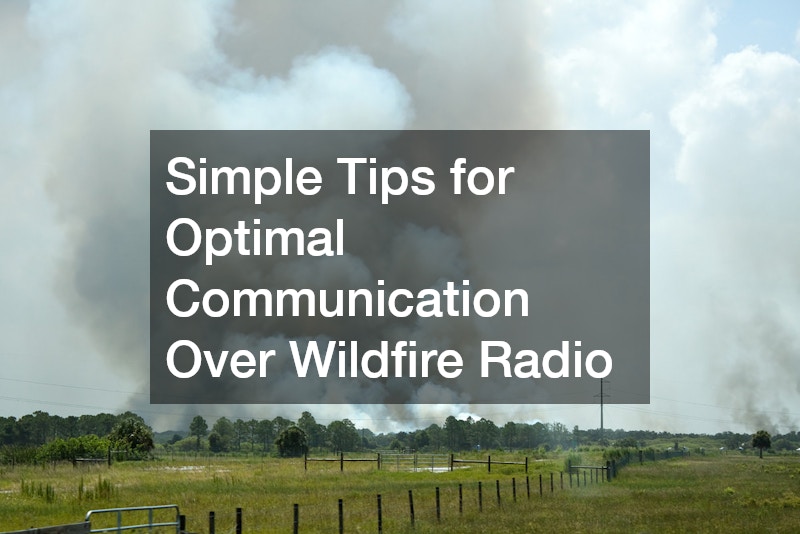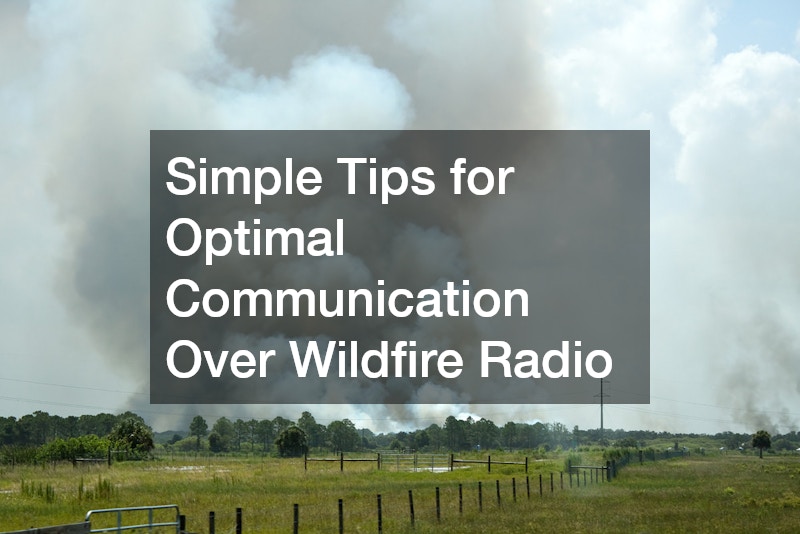Simple Tips for Optimal Communication Over Wildfire Radio


Effective communication during a wildfire emergency can be crucial in ensuring safety and coordination among involved parties. Wildfire radio serves as a pivotal tool for maintaining clear and reliable lines of communication. With the ability to operate independently from mobile networks, wildfire radios allow responders to stay connected even when traditional communications infrastructure is compromised.
Understanding the basics of wildfire radio helps in optimizing its use for seamless transmission of information. Knowledge about radio protocols, frequencies, and operating procedures is fundamental for efficient communication.
Knowing how to operate a wildfire radio properly is the first step in harnessing its full potential. Ensuring that the equipment is in good working condition is crucial for preventing any communication breakdowns. Regular maintenance and checks are recommended to ensure the radios function correctly when they are needed most. Familiarizing yourself with different frequency channels and categories helps in assigning the right priorities for communications traffic. Effective utilization of wildfire radio is a critical factor in successful emergency response and management.
In a wildfire situation, having preset channels dedicated to specific purposes enables quicker and more organized communication. Assigning designated frequencies for command, logistics, and medical emergencies allows for focused and efficient communication. By utilizing the correct channels, interference can be minimized, thereby reducing any potential confusion among the responders. Operators who are well-acquainted with radio etiquette and discipline can significantly reduce airtime congestion, ensuring vital messages get delivered promptly. Proper training in radio operations is a vital investment in getting the best out of the wildfire radio systems.
Improving Clarity and Efficiency in Radio Communications

When using wildfire radios, speaking clearly and concisely is essential to avoid misunderstandings. Ensuring that all communications are kept brief and to the point can improve overall efficiency and clarity. Operators should avoid using jargon or complex language that may lead to confusion, especially under stressful circumstances. Proper articulation and pronunciation are key components of effective communication, ensuring all conveyed messages are understood correctly the first time. Practice and training are instrumental in fostering these communication skills, equipping responders with the tools necessary to communicate effectively.
Another critical aspect of optimizing communication over wildfire radio is understanding and utilizing standard radio protocols. Adhering to established communication protocols aids in creating a structured environment where everyone knows when and how to contribute. Learning to listen actively before responding ensures that all discussions remain coherent and relevant to the task at hand. In an emergency setting, where time is of the essence, mastering these protocols is essential for seamless interaction and coordination between teams. Short, clear, and accurate exchanges reduce unnecessary airtime and promote a more effective flow of information.
Feedback is also an invaluable part of enhancing communication over wildfire radio. Encouraging operators to provide feedback about communication effectiveness can highlight areas needing improvement. This feedback loop fosters continuous learning and adaptation, which is crucial for keeping up with changing scenarios and dynamic environments. Moreover, implementing regular drills and simulations helps to sharpen communication skills and familiarize operators with the realistic pressure of a wildfire event. By prioritizing feedback and training, teams can significantly enhance their communication capabilities, ensuring they are prepared for any situation they face.
Enhancing Team Coordination Through Efficient Radio Use
Wildfire radio is indispensable for coordination amongst diverse teams working in different capacities during an emergency. By facilitating regular communication updates, wildfire radios enable a cohesive response, ensuring all team members stay informed and aligned. Coordination through efficient radio use aids in the swift execution of plans and enhances the ability to adapt to sudden changes or new developments. Having a well-coordinated response not only helps in tackling the immediate emergency but also improves overall resource management and operational efficiency. Scheduling regular check-ins and updates via radio can prevent redundancies and improve synchronization among teams.
In scenarios where teams are spread over a wide area, ensuring radio communication remains clear and uninterrupted is essential. The strategic placement of repeaters or relay stations can extend the range and reliability of wildfire radios, thereby maintaining consistent communication links. By having a clear understanding of the terrain and potential barriers, teams can plan the optimal positioning of equipment to overcome obstacles. This foresight in addressing range limitations is vital for ensuring that critical instructions and updates reach all necessary parties without delay. Implementing these strategies ensures that no part of the emergency response is left isolated or out of the loop.
Promoting a team-oriented mindset can significantly enhance communication effectiveness over wildfire radio. Encouraging team members to share relevant information actively and promptly ensures that vital data flows seamlessly across different levels of the operation. Prioritizing transparency and accountability in communications helps in building trust and ensures that all decisions are based on accurate and up-to-date information. Fostering this environment of openness and mutual support strengthens the overall team dynamic, enhancing the team’s resilience in the face of unpredictability and stress. By promoting collaboration and shared responsibility, teams can maximize the utility of their communication systems and optimize their response to wildfire emergencies.


